How To Make a Wooden Spoon or Spatula (Hand Carved)
Carving a wooden spoon or spatula is a fun woodworking hobby that results in a functional piece of art. The design and style possibilities of spoons and other kitchen utensils are endless, allowing you to be very creative. Spoons make excellent presents and when priced appropriately, they can be quick sellers at art and craft shows. In most cases, a wooden spoon can be finished in about one hour. So get out your whittling knife or your power carver and lets create a spoon!
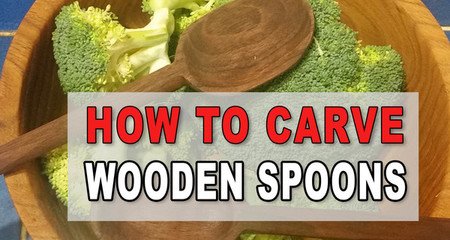
There are many ways to go about carving a spoon. To meet your style and your tool selection, I have divided this DIY article into two sections. The first section walks through creating a spoon using only some simple hand tools. The second section provides steps for people who prefer to incorporate more power tools into woodworking. Maybe you will prefer to use a combination of both hand and power tools.
Stock selection:
If making a stirring or serving spoon, I would recommend finding a piece of wood between 1/2″ (1.3cm) and 3/4″ (1.9cm) thick, and approximately 12″ (30 cm) in length, and 2.5” (6cm) in width. As shown below, you might want to make two spoons from a single board. You can use any type of wood to create a spoon. However, a spoon made from a hardwood like walnut, cherry, or maple will stand up better to the rough uses in the kitchen. Note: if you are new to hand carving, you might want to begin with a softer piece (e.g., basswood). Furthermore, you might also want to read the article “Wood Carving: Basic Tips and Techniques“. On the other hand, if you are a little more experienced with carving, you might want to look for some stock that has a few bends and twists!
A. How to Create a Wooden Spoon using HAND TOOLS.
Step 1. Draw a rough outline of the desire spoon on a piece of wood.
The spoon pattern shown below can be resized and printed to match your piece of wood.
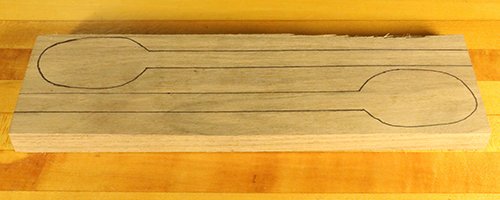
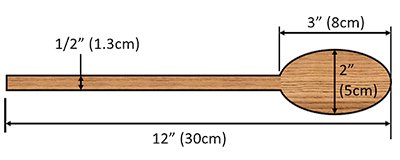
Step 2. Cut out the outline of the spoon.
You can use a handsaw, coping saw, keyhole saw, Japanese saw, or even a hacksaw to cut out the outline of the spoon.
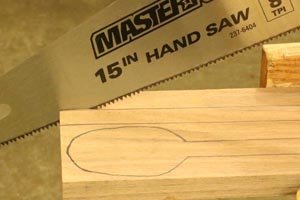
Step 3. Use a rounded gouge to carve out the bowl of the spoon.
Push the gouge forward into the wood making cuts towards the center of the bowl. Then flip the spoon 180 degrees and repeat from the other direction. At this point, you should have curls of wood facing in both directions. Keep removing more and more wood, as you get closer to the outer walls of your spoon. Note: If you tried to remove the wood from only one direction, it would most likely cause an area to tear or split out.
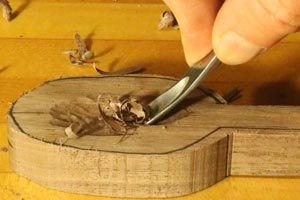
Why carve the bowl first? This helps set the parameters for the rest of the shaping and helps align the bowl with the handle. Secondly, carving the bowl is easier if the spoon is sitting flat on a work surface. If you carved the outside of the bowl first, the spoon would more likely want to rotate while carving.
Step 4. Shape the outside of the bowl and handle.
Using a whittling knife, drawknife, or spokeshave shape the outside of the handle and the outside of the bowl. Quick, light strokes work the best. Ideally, the outside of the bowl should have the same shape as the inside. Aim for a wall thickness of between 1/8 and 3/16.
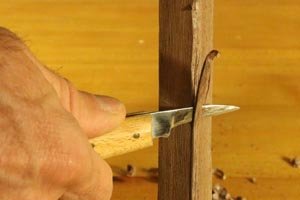
Step 5. Sand the wooden spoon.
Start with a coarse grit sandpaper and progressively work your way through finer and finger grits until you reach the desired level of smoothness.
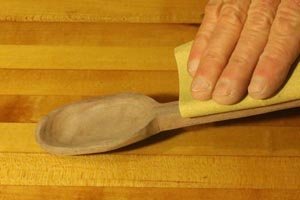
Step 6. Apply a food safe finish and enjoy.
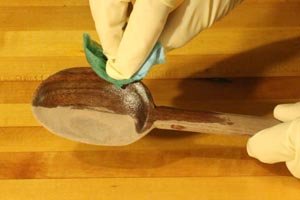

B. How to Create a Wooden Spoon using POWER TOOLS.
Step 1. Draw a rough outline of the desire spoon on a piece of wood.
The spoon pattern shown below can be resized and printed to match your piece of wood.


Step 2. Cut out the outline of the spoon.
To cut out the outline you might want to use a band saw, scroll saw, or jig saw.
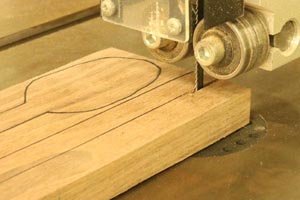
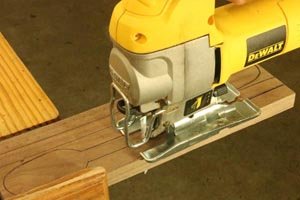
Step 3. Carve out the bowl of the spoon.
Use a power carver with a rounded gouge to carve out the bowl of the spoon. Push the gouge forward into the wood making cuts towards the center of the bowl. Then flip the spoon 180 degrees and repeat from the other direction. At this point, you should have curls of wood facing in both directions. Keep removing more and more wood, as you get closer to the outer walls of your spoon. Note: If you tried to remove the wood from only one direction, it would most likely cause an area to tear or split out. Note: The inside of the bowl can also be completely removed using power sanding (see Step 7).
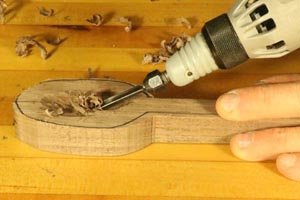
Step 4. Prepare the blank for the lathe.
Make two shallow cuts in the center of the handle. This will help hold the piece in the drive center on the lathe. Note: if using a two-prong drive center, you would only need to make one cut. Next drill a shallow hole on the top of the bowl. You will position the live center in this hole.
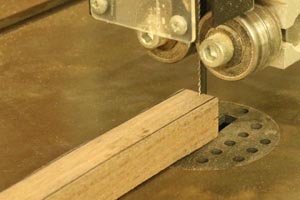
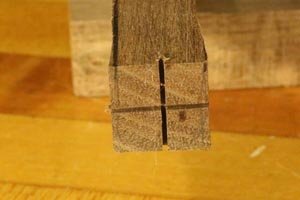
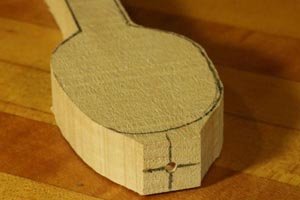
Step 5. Mount the blank on a lathe and turn the handle round.
You can use a variety of tools to turn the handle including bowl gouges and carbide tip scrapers.
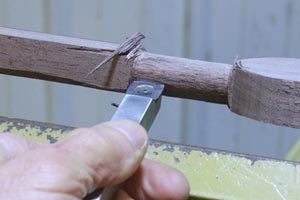
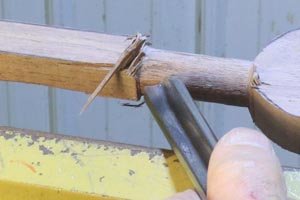
Step 6. Sand the handle.
With the lathe turned on sand the the handle on the spoon.
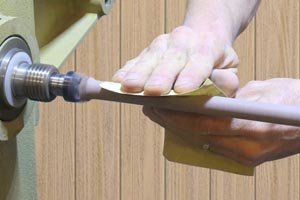
Step 7. Power sand the wooden spoon.
Sand the outside and inside of the bowl using power tools such as drill or Dremel. Start with a coarse grit sandpaper and progressively work your way through finer and finger grits until you reach the desired level of smoothness.
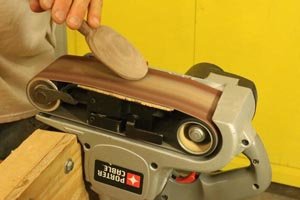
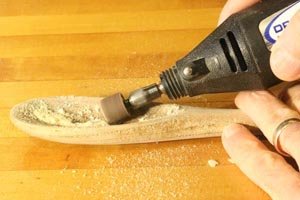
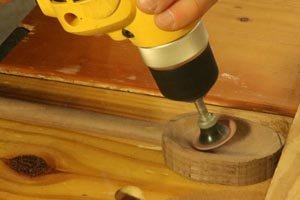
Step 8. Apply a food safe finish and enjoy!


Pin for later!
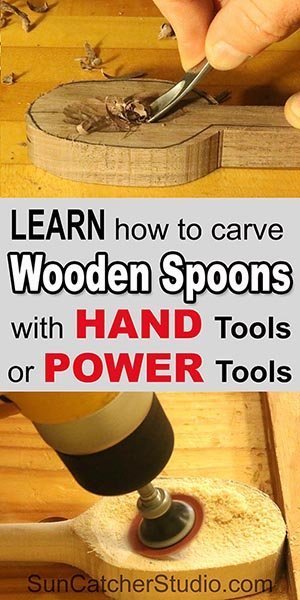
Looking for more WoodWorking Projects and Plans?
You will also find patterns of all 50 US States.

